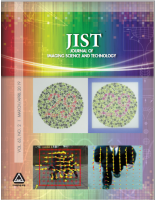
JOURNAL OF IMAGING SCIENCE AND TECHNOLOGY
Scope & Guideline
Exploring the Frontiers of Imaging Science
Introduction
Aims and Scopes
- Imaging Technology Development:
This area emphasizes advancements in imaging technologies, including novel algorithms and hardware improvements that enhance image acquisition, processing, and analysis. - Applications of Deep Learning in Imaging:
Deep learning techniques are increasingly applied for tasks such as image classification, segmentation, and enhancement, showcasing the integration of AI in imaging science. - Quantitative Imaging Techniques:
Research focusing on quantitative methods for imaging evaluation, including metrics for assessing image quality, accuracy, and performance of imaging systems. - Interdisciplinary Applications:
The journal highlights interdisciplinary applications of imaging science, ranging from medical imaging and remote sensing to industrial inspections and archival studies. - Data Fusion and Integration:
Studies that explore techniques for integrating various data sources and modalities, improving the robustness and effectiveness of imaging solutions.
Trending and Emerging
- Artificial Intelligence and Machine Learning Applications:
The integration of AI and machine learning in imaging science is increasingly prevalent, with numerous studies focusing on automated image analysis, classification, and enhancement. - 3D Imaging and Reconstruction Techniques:
There is a growing emphasis on 3D imaging methodologies, including depth estimation and reconstruction, reflecting advancements in both hardware and software capabilities. - Remote Sensing and Environmental Monitoring:
Research in remote sensing applications is expanding, particularly in the context of environmental monitoring, disaster management, and resource assessment. - Augmented Reality and Virtual Reality Applications:
The use of imaging technologies in AR and VR contexts is on the rise, exploring new ways to visualize and interact with data. - Health Informatics and Medical Imaging Innovations:
There is an increasing focus on health informatics, with innovative imaging techniques being developed for diagnostics, treatment planning, and monitoring in healthcare.
Declining or Waning
- Traditional Imaging Techniques:
There is a noticeable decline in publications focused on conventional imaging methods, as researchers increasingly explore advanced computational approaches and machine learning techniques. - Basic Image Processing Algorithms:
The prevalence of basic image processing methods is waning, with a shift towards more complex and integrated methods that leverage deep learning for enhanced performance. - Analog Imaging Methods:
Research related to analog imaging techniques has become less common, as digital imaging technologies dominate the landscape of imaging science. - Single-Modal Imaging Studies:
There is a reduction in studies focusing solely on single-modal imaging approaches, as the trend moves towards multi-modal imaging systems that provide more comprehensive insights. - Hardware-Centric Research:
Research centered exclusively on hardware advancements is declining in favor of software innovations and algorithmic developments that can be applied across different platforms.
Similar Journals
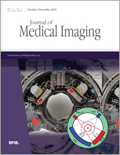
Journal of Medical Imaging
Advancing the Future of Diagnostic ImagingThe Journal of Medical Imaging, published by SPIE-SOC PHOTO-OPTICAL INSTRUMENTATION ENGINEERS, is an esteemed publication in the field of medical imaging, playing a pivotal role in advancing the discipline since its inception in 2014. With an ISSN of 2329-4302 and an E-ISSN of 2329-4310, this journal has garnered significant recognition, evidenced by its Q2 ranking in 2023 within the critical category of Radiology, Nuclear Medicine, and Imaging. The journal is dedicated to presenting cutting-edge research and innovations that enhance diagnostic imaging techniques and methodologies, appealing to a diverse audience of researchers, professionals, and students alike. Offering valuable insights into the interplay of optics and imaging technologies, it serves as a crucial resource for fostering knowledge and collaboration in the medical community. Notably, it holds a competitive rank of #136 out of 333 in its Scopus category, placing it in the 59th percentile—a testament to its influence and relevance in ongoing medical research. Therefore, the Journal of Medical Imaging stands out as an essential platform for disseminating transformative findings and innovations in healthcare imaging.

Traitement du Signal
Illuminating the Path of Electrical InnovationTraitement du Signal, published by the INT Information & Engineering Technology Association, is a distinguished journal that serves the vibrant field of Electrical and Electronic Engineering. With an ISSN of 0765-0019 and an E-ISSN of 1958-5608, this journal has made significant contributions to the discipline since its inception. While it currently operates under a non-open access model, it maintains its commitment to disseminating valuable research from 2010 to 2023, despite its recent discontinuation in Scopus coverage. Recognized in the third quartile (Q3) of the category in 2022, the journal provides a platform for researchers, professionals, and students to publish their findings on topics such as signal processing, communications, and related technologies. By curating high-quality articles, Traitement du Signal plays a crucial role in advancing knowledge and fostering innovation within the electrical and electronic engineering community.

Journal of X-Ray Science and Technology
Exploring Breakthroughs in Imaging and InstrumentationThe Journal of X-Ray Science and Technology, published by IOS PRESS, serves as a premier platform for researchers and professionals dedicated to advancements in the fields related to X-ray science, imaging techniques, and instrumentation. With an ISSN of 0895-3996 and an E-ISSN of 1095-9114, this journal has established itself as a vital resource since its inception in 1989. The journal has transitioned through multiple publishing phases, currently converging its years of publication from 2001 to 2024, thereby enriching the scientific community’s understanding across various categories, notably in the second quartile (Q2) of Condensed Matter Physics, Electrical and Electronic Engineering, Instrumentation, Radiation, and Radiology, Nuclear Medicine and Imaging as of 2023.
In addition to its commendable Scopus rankings—which highlight its relevance and impact within the medical and physical sciences—the journal emphasizes the dissemination of impactful research, innovative techniques, and collaborative efforts within the X-ray scientific community. Despite being a subscription-based journal, its contributions are crucial for those aiming to stay at the forefront of research and technological development in these rapidly evolving fields.

IMAGING SCIENCE JOURNAL
Unveiling the Future of Media Technology and VisionImaging Science Journal, published by Taylor & Francis Ltd, serves as a vital resource for researchers and professionals in the fields of computer vision, pattern recognition, and media technology. With an ISSN of 1368-2199 and an E-ISSN of 1743-131X, this journal has been fostering scholarly dialogue since its inception in 1997, with a converged content offering extending through 2024. Its categorization in Quartile 4 in Computer Vision and Pattern Recognition and Quartile 3 in Media Technology highlights its relevance and contributions to emerging trends in these domains. Although it ranks 36th in the Engineering - Media Technology category and 96th in Computer Science - Computer Vision and Pattern Recognition, its innovative research and insights continue to attract the attention of scholars dedicated to advancing knowledge at the intersection of imaging technologies. Offering versatile access options, this journal is essential for students, researchers, and professionals aiming to stay informed and engaged in the rapidly evolving landscape of imaging science.

Journal of Imaging
Elevating Standards in Imaging and Pattern RecognitionThe Journal of Imaging, published by MDPI, is an esteemed open-access journal dedicated to advancing the fields of Computer Graphics, Computer Vision, and Electrical Engineering. Since its inception in 2015, this journal has established a significant presence in the academic community, reflected by its impressive rankings in Scopus, including a Q2 quartile in multiple categories such as Computer Vision and Pattern Recognition and Radiology. With a commitment to disseminating high-quality research, the journal offers a platform for innovative studies and practical applications, making it an essential resource for researchers, professionals, and students alike. Operating from its base in Basel, Switzerland, the journal continues to promote scholarly work that pushes the boundaries of imaging technologies, while contributing to the global discourse in its respective fields. The open-access model ensures that valuable research is readily available, fostering collaboration and knowledge-sharing across disciplines.
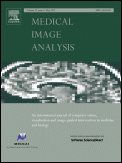
MEDICAL IMAGE ANALYSIS
Empowering Researchers to Enhance Diagnostic Accuracy.MEDICAL IMAGE ANALYSIS, published by ELSEVIER, stands as a premier journal in the fields of computer science and medical imaging, particularly focusing on the intersection of Computer Graphics, Computer Vision, and Health Informatics. With an impressive impact factor and a consistent classification in the Q1 quartile across multiple domains including Radiology and Radiological Technology, this journal attracts high-quality research and innovative methodologies that significantly contribute to advancing medical practices and technology. Based in the Netherlands, and covering a gamut of topics from 1996 to 2025, it serves as a vital platform for disseminating cutting-edge studies aiming to enhance diagnostic accuracy and treatment planning through sophisticated imaging techniques. While it does not offer Open Access options, the journal’s rigorous peer-review process and high Scopus rankings—positioning it within the top percentiles across several categories—further solidify its reputation as an essential resource for researchers, professionals, and students committed to the evolution of medical imaging.
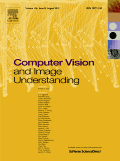
COMPUTER VISION AND IMAGE UNDERSTANDING
Unveiling the Future of Image AnalysisCOMPUTER VISION AND IMAGE UNDERSTANDING is a leading academic journal published by Academic Press Inc, Elsevier Science, dedicated to the advancement of the fields of computer vision, image understanding, and pattern recognition. Since its inception in 1993, this esteemed publication has garnered a reputation for excellence, achieving a remarkable Q1 ranking in the categories of Computer Vision and Pattern Recognition, Signal Processing, and Software as of 2023. With its robust impact factor and high visibility in the scientific community—ranking #22 out of 106 in Computer Vision and Pattern Recognition and #27 out of 131 in Signal Processing—this journal serves as a vital resource for researchers, professionals, and students looking to explore and contribute to state-of-the-art developments. Although it does not operate under an Open Access model, its rigorous peer-reviewed content ensures quality and relevance in a rapidly evolving technological landscape. The journal’s commitment to fostering innovation makes it an essential tool for anyone engaged in the study and application of computer vision technologies.

JOURNAL OF DIGITAL IMAGING
Advancing the Frontiers of Digital ImagingJOURNAL OF DIGITAL IMAGING, published by Springer, is a premier journal dedicated to the field of digital imaging, encompassing significant developments in the intersecting disciplines of radiology, computer science applications, and ultrasound technology. With its impressive Q1 ranking in the categories of Radiology, Nuclear Medicine and Imaging, and Radiological and Ultrasound Technology, and a substantial Q2 ranking in Computer Science Applications, this journal is positioned at the forefront of research dissemination in these vital areas. The ISSN 0897-1889 and E-ISSN 1618-727X signify its broad reach and accessibility, while its Scopus rankings demonstrate its robust impact in the academic community, ranked #41/333 in Radiology and earning a notable 87th percentile status. Since its inception in 1988, the journal has served as a vital resource for researchers and professionals seeking to advance their understanding of digital imaging technologies and their applications. Although it does not currently offer open access options, it continues to foster scholarly dialogue and innovation, making it an indispensable platform for those committed to excellence in imaging science and technology.
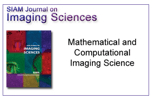
SIAM Journal on Imaging Sciences
Elevating Knowledge in Imaging through Rigorous Scholarship.SIAM Journal on Imaging Sciences is a prestigious academic journal published by SIAM PUBLICATIONS, focusing on the latest advancements and applications in imaging sciences within the fields of applied and general mathematics. Since its inception in 2008, the journal has established itself as a premier outlet for original research, evidenced by its remarkable standing in the academic community, including a Q1 ranking in both Applied Mathematics and Mathematics (miscellaneous) for 2023. With a Scopus rank of #45 in General Mathematics and an 88th percentile achievement, the journal continues to attract high-quality contributions, making it a vital resource for researchers, professionals, and students eager to stay at the forefront of imaging science developments. Although not currently open access, the journal provides significant visibility through its rigorous peer-review process and commitment to scholarly excellence, ensuring that published works contribute substantially to knowledge in the field. For those looking to delve into innovative imaging techniques or mathematical modeling approaches, the SIAM Journal on Imaging Sciences remains an essential reference point.
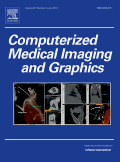
COMPUTERIZED MEDICAL IMAGING AND GRAPHICS
Transforming Healthcare through Visual TechnologyCOMPUTERIZED MEDICAL IMAGING AND GRAPHICS, published by PERGAMON-ELSEVIER SCIENCE LTD, is a leading international journal that has significantly contributed to the fields of medical imaging, graphics, and informatics since its establishment in 1988. With a remarkable reputation reflected in its Q1 quartile rankings across multiple categories—including Computer Graphics, Health Informatics, and Radiology—this journal maintains a prominent position in the academic community, evidenced by its Scopus rankings where it ranks in the top percentile across various disciplines. The journal aims to advance knowledge and innovation within the intersection of technology and healthcare, featuring high-quality research that addresses contemporary challenges in medical imaging and graphical methodologies. With no open access options currently available, this journal serves as a crucial resource for researchers, professionals, and students who are at the forefront of advancing imaging technology and its applications in medicine.